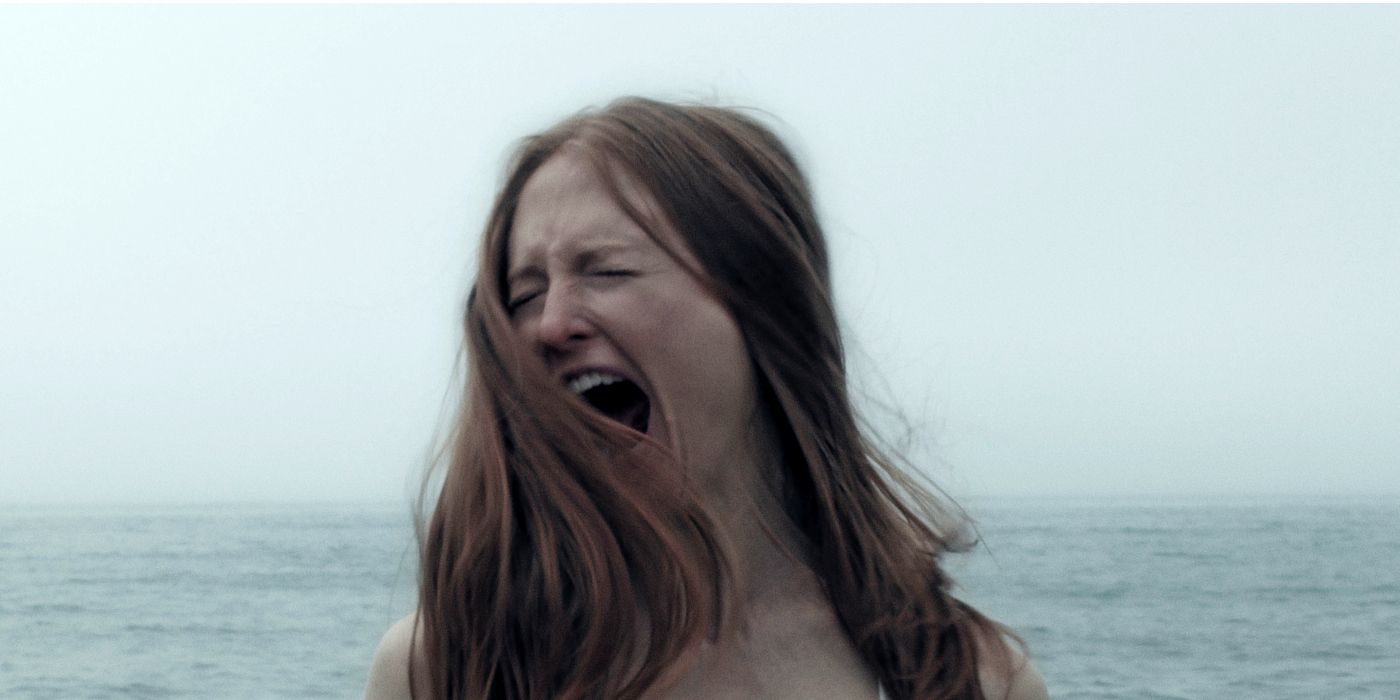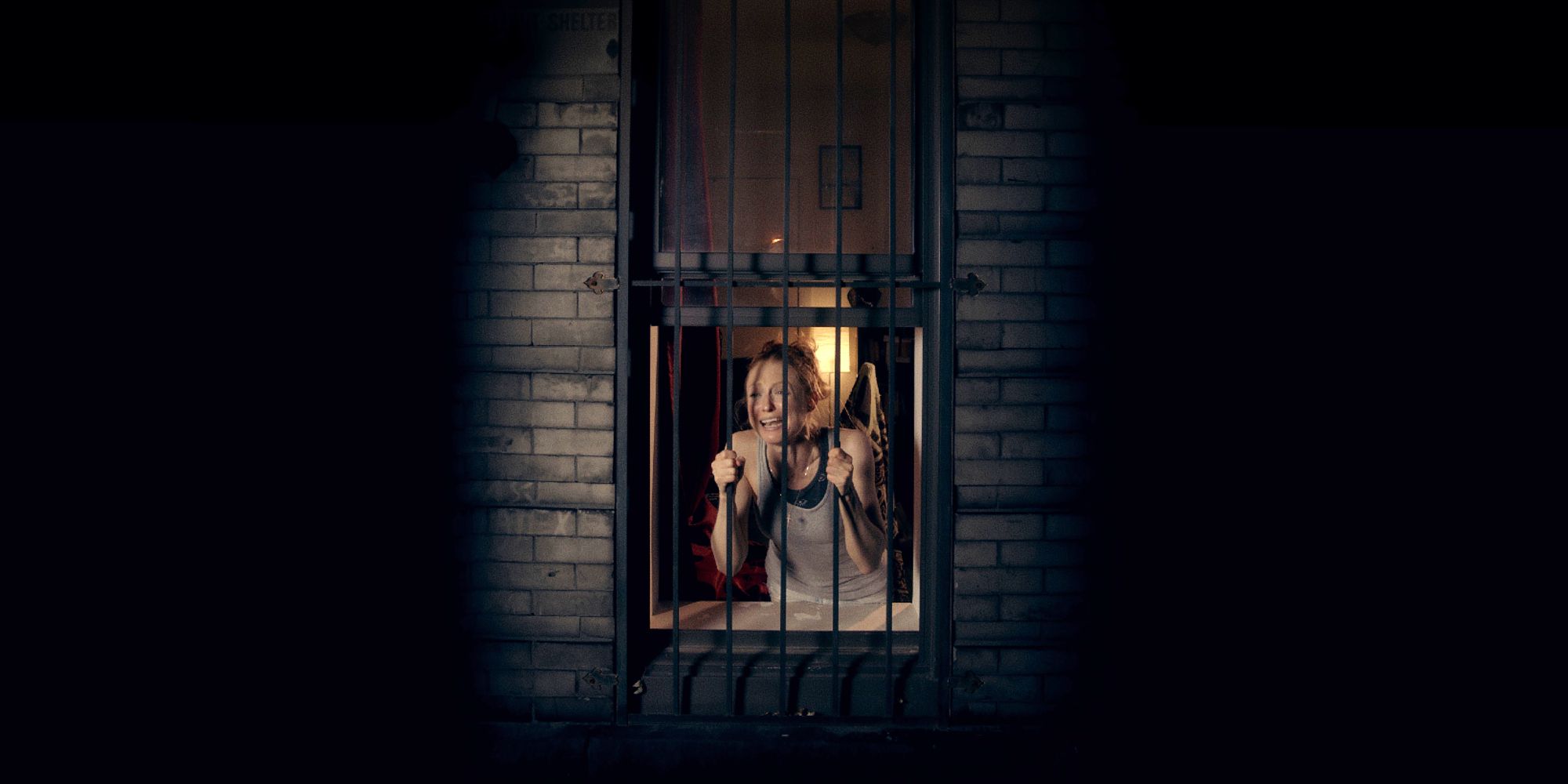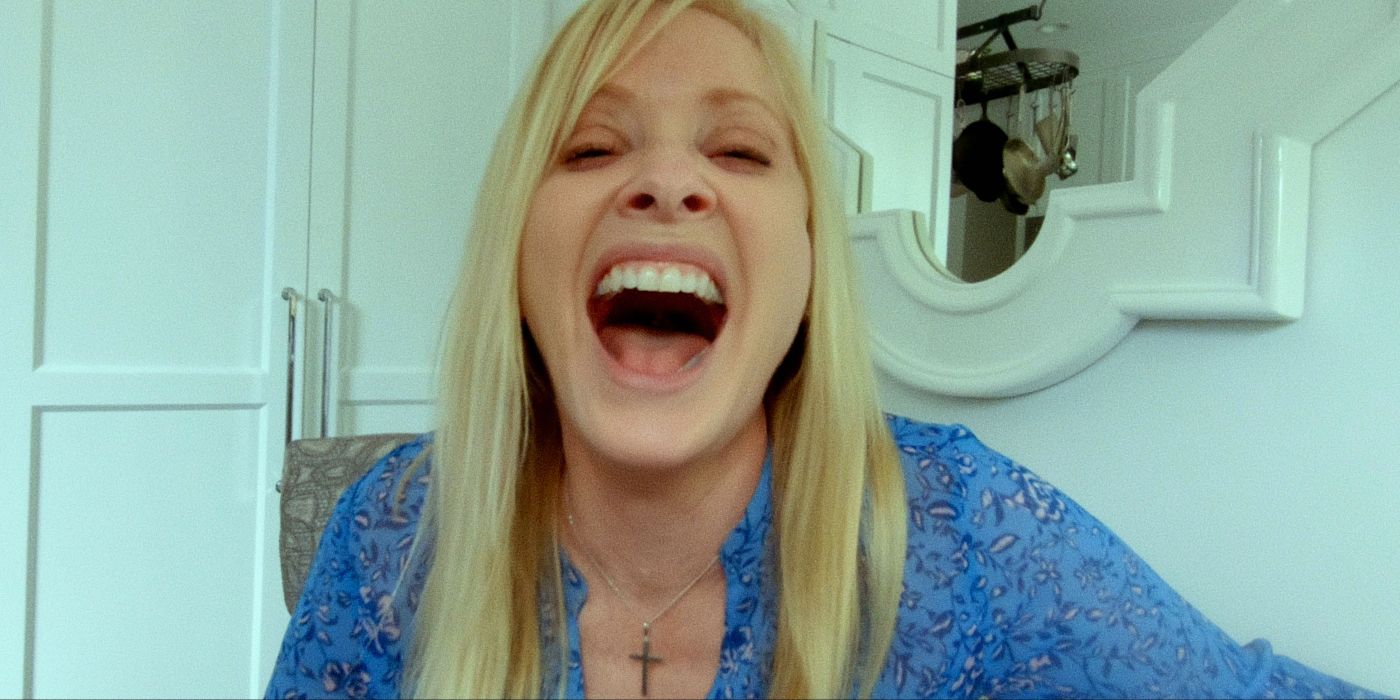The real-world horrors of the pandemic have been translated onscreen in varying shades, culminating in one-room horror offerings such as last year’s We Need To Do Something and Oxygen. Alone With You, in more ways than one, is a triumph in the one-room horror genre. The film is able to capture the visceral nature of isolation and cabin fever, elevating them to a fever pitch. Utilizing subtle jump scares and layered mystery to unleash its many nightmares, Alone With You drips with fearful intrigue right up until the end.
Alone With You opens with Charlie (Emily Bennett) getting her apartment ready for girlfriend Simone (Emma Myles) to celebrate their anniversary together. Simone, a professional photographer, is away on a work trip, and Charlie is doing her best to welcome her partner back home. However, all is not well. Between receiving condescending video calls from her friend Thea (Dora Madison) and a video call from her overbearingly religious mother (Barbara Crampton), Charlie begins feeling increasingly on edge, especially with Simone not answering her calls at all. Things turn creepy really quickly: glimpses of an ominous figure inside the house can be seen at the periphery of certain scenes, videos start glitching in a rather unsettling way, and the front door refuses to budge, rendering Charlie trapped inside.
The reason why Alone With You succeeds in emerging as such a compelling paranoid horror is that it knows how to utilize its slow-burn narrative format to deliver spaced-out scares. Subtle visual cues are provided to introduce a sense of disorientation and a hint of madness: time stops working (literally, all digital times freeze and disappear), the many photographs inside the apartment shift and alter ever so slightly, and parts of the dialogue are interposed with jarring sound design to deliver a jab meant to provoke. This is done especially well in the video call sequences between Charlie and her mother, who is obviously disapproving of her daughter’s core identity, expressing it via passive-aggressive jabs and casual cruelty. Her mother’s thinly-veiled judgment, latent homophobia, and utter lack of respect for Charlie’s lifestyle as a make-up artist culminate in a rather harrowing sequence.
Things take a progressively worse turn as time passes. Charlie hears incessant, unsettling wailing from the heating vents, which ultimately turn into invasive taunts and almost demonic cackles that drive Charlie to the edge of sanity. It becomes increasingly difficult to differentiate between dreams and waking nightmares, memories and reality, and what exactly went on between Charlie and Simone. Despite being a narrative hinged on a queer couple, the two barely share any space onscreen, as Simone is largely absent and is only referred to through flashbacks. This, of course, is not a limitation by any means, but leaves some aspects of the central relationship half-baked, especially given that the very premise of Charlie’s psychological break hinges on something that occurred between the two.
Alone With You works solely due to Bennett’s incredible performance — her character is meant to carry the entire narrative forward without having the opportunity to physically interact with anyone else. Bennett also co-wrote and co-directed the film with Justin Brooks, making it apparent that she is the driving force behind Alone With You’s raw, guttural aura which saturates the confines of the film right up until the end. Crampton, who is no stranger to standout roles in horror, does a wonderful job driving all of her scenes home to a perfectly eerie effect. The only glaring flaw in Alone With You is its rushed final moments and ending, but it is not discordant enough to mar the genuinely uncomfortable scares and taut suspense it generates throughout.
Alone With You released in theaters on February 4 and will be available on demand and digital on February 8. The film is 83 minutes long and is not rated.



